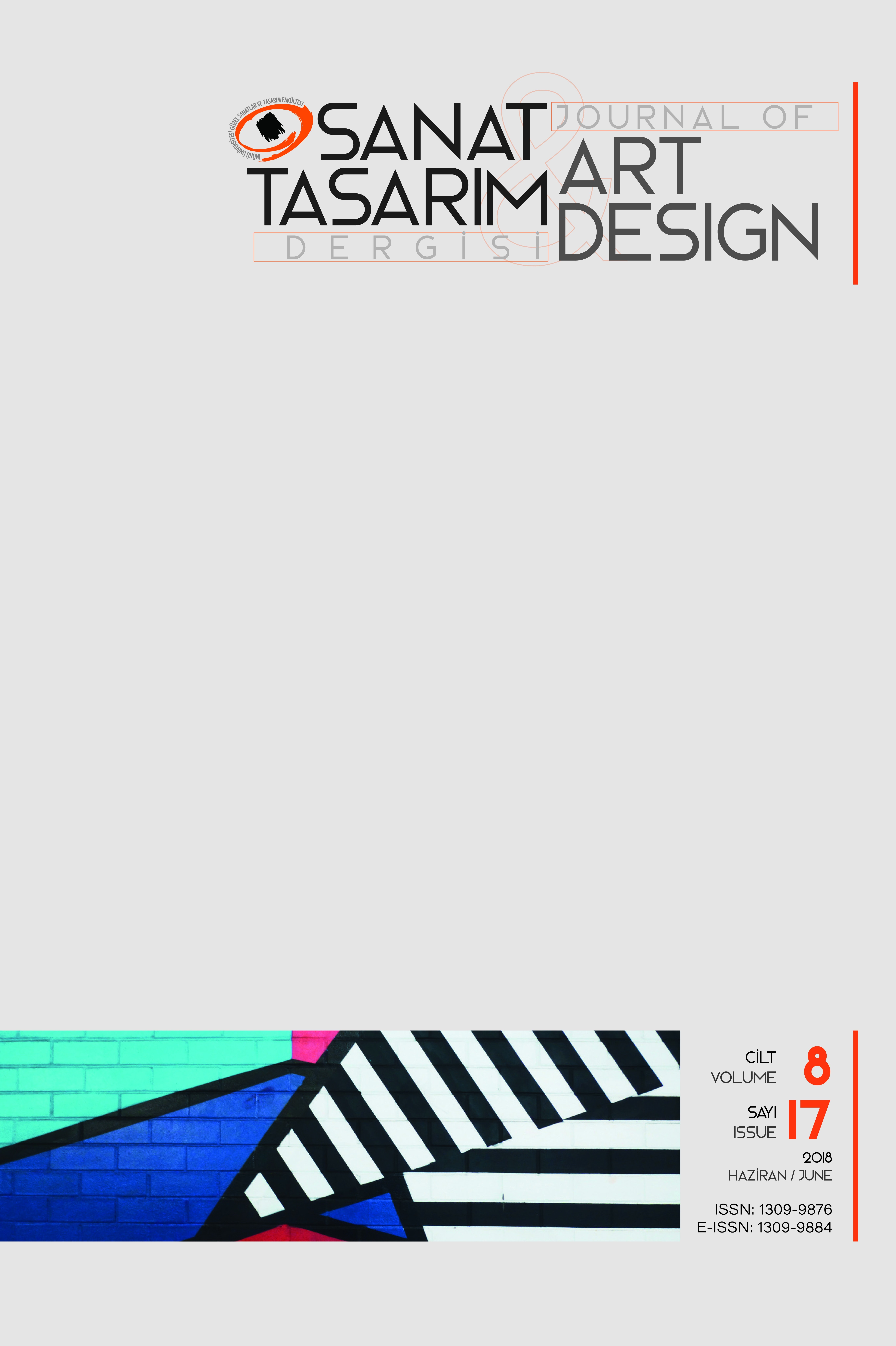SILKWORM BREEDING AND HISTORIC SILK FABRICS OF HARPOOT REGION
SILKWORM BREEDING AND HISTORIC SILK FABRICS OF HARPOOT REGION
___
- Albayrak A. 2006. Textile industry in Malatya, University of Firat, PhD. thesis, , Elazig, p.1-73.
- Aytaç A. 2000. Traditional hand woven, Konya: Selcuk University Publications, p. 57
- V. Bardizktsi- B. Natanyan,- K. Sirvantdyant. 2010. Palu-Harpoot 1878, Derlem Press, İstanbul, p.1-563
- Breu, M. R. and Marchese, R. T. 2008. Social Cohesion and Cultural Expressions: The Case of the Sacred Textiles in the Armenian Orthodox Churches of Istanbul, Textile Society of America Symposium Proceedings, 11th Biennial Symposium: Textiles as Cultural Expressions, 4-7 September, 2008, Honolulu, Hawai'I, pp.1-10
- http://www.houshamadyan.org/en/mapottomanempire.html, (accessed 27 April 2015)
- Jenkins, D. 2008. Textile History: 40 Years, Textile History, vol.39, no.1, pp. 4–15.
- Ozel, G. (2008) Elazig Handicrafts, Elazığ: Harpoot Governorship Press, p.1-302
- Paoletti, J. B. 1984. Does the costume and textile historian have a place in the future? Clothing and Textiles Research Journal, vol. 2, no. 2, pp. 33-36.
- Personal communication, S. Özeren, Former Silkworm breeder. 08 June 2014, Phone: +904242124104
- Personel communication, A. Özeren, Former Silkworm breeder. 08. June 2014, Phone: +904242124104
- Quataert, D. 2002 Ottaman Manufacturing in the age of the Industrial Revolution, Cambridge University Press, p Cambridge,60-69.
- Sakaoglu N. 2013. Harpoot in Dawn sleep, Gülsan Education and Culture Foundation,İstanbul, p.1-216
- Semerdjian, J. 2006. Hye Etch –The Armenian Patriarch of Constantinople, (accessed 1March 2015).Hye Etch < [http//:www.hyeetch.nareg.com.au/.2006]>
- Taylor, L. 2002. The study of dress history,: Manchester University Press, Manchester,p. 50.
- Tortora, P. G. and Eubank K. 2010. Survey of Historic Costume, 5th ed, New York, NY: Fairchild.p.5
- Yilmazcelik, I. 1999. Agriculture, Trade and Industry in Post Republic Elazig, Firat University Journal of Social Science, Harpoot , Vol. 9, no. 1, pp.255-281.
- Albayrak A. 2006. Textile industry in Malatya, University of Firat, PhD. thesis, , Elazig, p.1-73.
- Aytaç A. 2000. Traditional hand woven, Konya: Selcuk University Publications, p. 57
- V. Bardizktsi- B. Natanyan,- K. Sirvantdyant. 2010. Palu-Harpoot 1878, Derlem Press, İstanbul, p.1-563
- Breu, M. R. and Marchese, R. T. 2008. Social Cohesion and Cultural Expressions: The Case of the Sacred Textiles in the Armenian Orthodox Churches of Istanbul, Textile Society of America Symposium Proceedings, 11th Biennial Symposium: Textiles as Cultural Expressions, 4-7 September, 2008, Honolulu, Hawai'I, pp.1-10
- http://www.houshamadyan.org/en/mapottomanempire.html, (accessed 27 April 2015)
- Jenkins, D. 2008. Textile History: 40 Years, Textile History, vol.39, no.1, pp. 4–15.
- Ozel, G. (2008) Elazig Handicrafts, Elazığ: Harpoot Governorship Press, p.1-302
- Paoletti, J. B. 1984. Does the costume and textile historian have a place in the future? Clothing and Textiles Research Journal, vol. 2, no. 2, pp. 33-36.
- Personal communication, S. Özeren, Former Silkworm breeder. 08 June 2014, Phone: +904242124104
- Personel communication, A. Özeren, Former Silkworm breeder. 08. June 2014, Phone: +904242124104
- Quataert, D. 2002 Ottaman Manufacturing in the age of the Industrial Revolution, Cambridge University Press, p Cambridge,60-69.
- Sakaoglu N. 2013. Harpoot in Dawn sleep, Gülsan Education and Culture Foundation,İstanbul, p.1-216
- Semerdjian, J. 2006. Hye Etch –The Armenian Patriarch of Constantinople, (accessed 1March 2015).Hye Etch < [http//:www.hyeetch.nareg.com.au/.2006]>
- Taylor, L. 2002. The study of dress history,: Manchester University Press, Manchester,p. 50.
- Tortora, P. G. and Eubank K. 2010. Survey of Historic Costume, 5th ed, New York, NY: Fairchild.p.5
- Yilmazcelik, I. 1999. Agriculture, Trade and Industry in Post Republic Elazig, Firat University Journal of Social Science, Harpoot , Vol. 9, no. 1, pp.255-281.
- ISSN: 1309-9876
- Başlangıç: 2011
- Yayıncı: İnönü Üniversitesi
Buket ÖZDEMİR IŞIK, Sara DEMİR
ALAYBEY KAROĞLU RESİMLERİNE YANSIYAN SANATÇI KİŞİLİĞİ
Ercan GÖKYER, Melih ÖZTÜRK, Yasin DÖNMEZ, Suat ÇABUK
VALİ-BELEDİYE BAŞKANI NAZMİ TOKER DÖNEMİ (1932-1936) KAYSERİ KENTİNİN BİÇİMLENİŞİ
EBRU SANATININ TEKSTİLDE KULLANIMI
SILKWORM BREEDING AND HISTORIC SILK FABRICS OF HARPOOT REGION
MÜZİK TARİHİ DERSİNDE GRUP ETKİNLİĞİNE DAYALI KAVRAM HARİTALAMA
